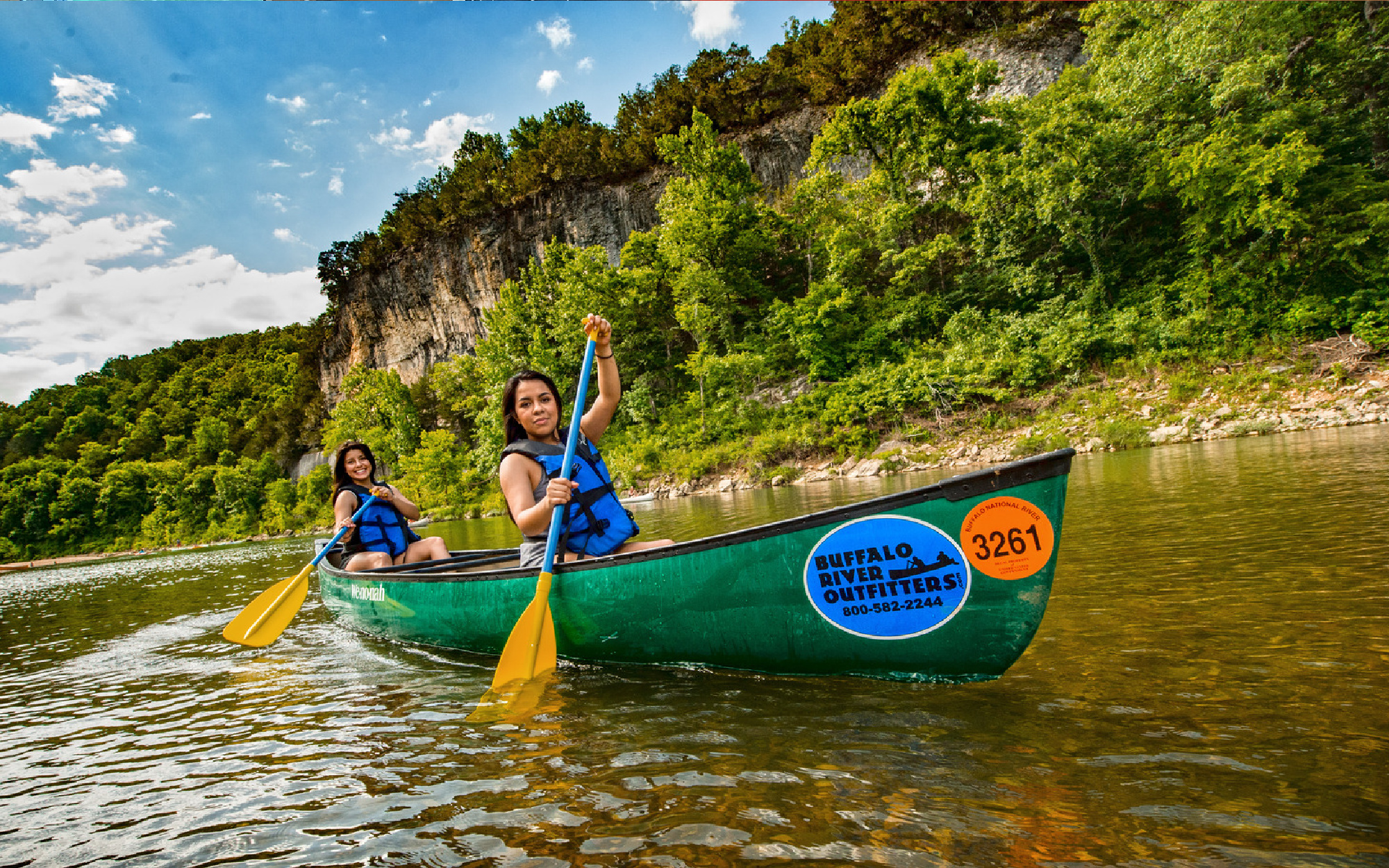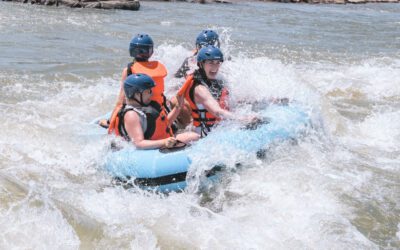The warm days of spring are a great time to load up your canoe or kayak and head out for a float trip. Where do you begin with so many scenic waterways in the Natural State to choose from? For those who live in the River Valley, how about a picturesque getaway less than two miles from downtown Fort Smith?
THE ARKANSAS RIVER WATER TRAIL
The Arkansas River Water Trail begins at the Powers Port Canoe Access on Riverfront Drive. The Arkansas River Water Trail is a great family outing for young paddlers uncomfortable on moving water. A series of islands protects these calm waters from the swift undercurrents of the mighty Arkansas River. These sheltered inlets provide a welcome haven for waterfowl, guaranteeing visitors many wildlife viewing opportunities.
The trail weaves through narrow channels separating densely wooded islands. The passage offers visitors an up-close and personal experience amid the lush flora and critters that call this wetland home.
FROG BAYOU
For those seeking a more exciting float, consider Frog Bayou. It’s just a short drive from the River Valley with headwaters near Mountainburg. It’s a great spot to experience the pristine, emerald-green water for which Ozark streams are famous. The waterway includes Class I and II conditions, which include minimal drops and willow jungles. Those with limited whitewater experience should be fine with this grade of rapids. Just be sure to wear proper flotation gear.
There are several put-in locations on Frog Bayou. The first is just north of Mountainburg at the Ash Street low-water bridge. The second is about three and a half miles downstream at the first bridge that crosses the tributary on Highway 282, just south of town. For most, this is the best choice. The next takeout, not on private property, is some ten miles downstream at Lancaster Low-Water Bridge.
Finally, option three is to put-in at Lancaster for an eight-mile float to Rudy. Be mindful that this stretch includes Class II features that can prove exciting but may be more than first-time floaters want to tackle.
THE MULBERRY RIVER
Mulberry River is another popular float. If you do not own equipment for tackling whitewater, Turner Bend Outfitters (turnerbend.com) and Byrd’s Adventure Center (byrdsadventurecenter.com) can provide everything you need, including shuttle service.
The Mulberry River begins near Salus, Arkansas, and flows some seventy miles before feeding into the Arkansas River. The uppermost section of the river is only navigable immediately following heavy rains. Wolf Pen Recreation Area is normally the furthest upstream location to put-in. If you are uncomfortable maneuvering Class III rapids with potentially four-foot waves, such as those often spawned at Whoop and Holler, consider beginning your float at a launch site further downstream.
The Mulberry River is designated a National Wild and Scenic River, which guarantees boaters a beautiful, picturesque outing. With Highway 215 bordering much of the riverbank, convenient launch sites are available at numerous access areas just off the highway.
Boaters can plan a fun, single-day float on the Mulberry or extend their adventure to a multiday trip. With some fifty miles of river from the Wolf Pen put-in to the takeout at the I-40 bridge, the options are unlimited.
You can camp in established areas bordering the river or rent a cabin from Turner Bend.
The BUFFALO RIVER
Although it is more of a drive, a list of floatable Arkansas waterways would only be complete if it included America’s first National River, the Buffalo River – the crown jewel for paddlers in the Natural State.
From its headwaters in the Boston Mountains to where it joins the White River some 140 miles later, the Buffalo is one of the most famous waterways in the nation. It flows at the base of sheer 300-plus-foot bluffs and past endless wildlife viewing opportunities along the protected, lush shoreline. The Buffalo allows visitors to experience nature uninterrupted, as it has been for hundreds of years.
The upper sections include challenging Class I and II whitewater. The lower parts of the river possess natural features unique to the river and the state itself. One such feature is “Skull Bluff.” Eons of erosion from the carbonic acid in rainwater have eaten away at the 200-foot limestone bluff to create a skull-like formation. Boaters can paddle through the formation’s eye sockets at certain water levels.
THE WHITE RIVER
The final family-friendly float is the White River below Beaver Lake Dam. One of the main attractions of this section of the river is that even in the middle of summer when other streams are bath-water warm, the churning water released from the bottom of the dam keeps the downstream temperature at a refreshing fifty-five degrees. The dam also provides a steady, gentle current so the kids can drift behind your canoe in a tube.
Visit the Arkansas Canoe Club (arkansascanoeclub.com) for updated water levels on streams across the state. Check out their upcoming class, The School of River Paddling, June 14-16. Certified trainers will instruct participants on the skills needed to enjoy a safe and fun experience on moving water.
WORDS Bob Robinson
IMAGES Bob Robinson and courtesy Arkansas Tourism




